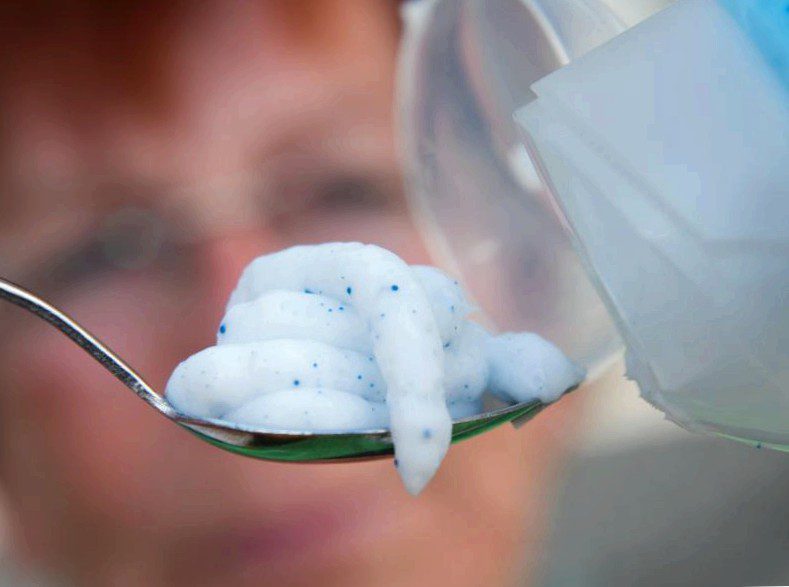Not just cosmetics: microplastics have many sources

With every step, fubgangers release microplastics into the environment. Around 100 grams of abrasion from the soles of shoes are said to be produced per capita and year in germany, as researchers from the fraunhofer institute for environmental, safety and energy technology in oberhausen have calculated.
This puts footwear in seventh place on the list of gross microplastic sources found in the study by environmental scientists.
So far, the public debate about plastic microparticles, which by definition measure no more than five millimeters, has focused primarily on personal care products and cosmetics. But there are many more sources: the authors of the study "plastics in the environment" have determined the emissions from 51 sources of primary microplastics. The clients were chemical companies, cosmetics manufacturers, water associations, waste disposal companies and universities.
A total of 330.000 tons of microplastics are produced in germany every year – a good four kilograms per capita. With 19 grams, shower bathers and co. Only 17th on the negative list. Abrasion from car tires tops the list of microplastic polluters. According to the study, microplastics account for around one-third of microplastic emissions.
And there is something else remarkable about the figures from oberhausen. Macroplastics – i.E., plastic totes and other carelessly discarded plastic products – only account for a good quarter of the total 446% in germany.000 tons of plastic emissions per year. Microplastics account for 74 percent. "What is obvious to everyone is thus counterbalanced by a quantity that is about three times coarser, some of which is only visible under the microscope," the study states.
Researchers distinguish between two categories of microplastics: firstly, particles that are added to a product during the manufacturing process, such as the grating particles in cosmetics. In the second type, the microparticles are only formed during use, for example synthetic fibers released during washing. "The distinction is important for the responsibility for avoiding microplastics," says study author jurgen bertling.
How researchers arrive at their figures? Data from experiments or measurements are few and far between. Using the example of shoe sole abrasion, co-author leandra hamann explains the procedure: "we took the total number of shoes sold per year in germany as our starting point."The average shoe size, sole area and around five pairs of shoes discarded per capita per year were also included in the calculations.
The scientists’ figures are, as they themselves admit, "rather in the upper range" compared to other studies, because more sources were taken into account. The scientists analyzed earlier studies and extrapolated production and consumption data down to microplastic emissions.
The fact that microplastics in cosmetics play a rather minor role in terms of quantity does not surprise the federal environment agency. The company’s own experts have come to the same conclusion, says spokesman felix poetschke. "But it is also the easiest to avoid."The amount of tire wear is also within the range calculated so far.
Obtaining data on the targeted use of microparticles is extremely difficult for researchers. In a study on the sources of microplastics published by the federal environment agency in 2015, for example, it is stated that there has been little willingness on the part of industry to provide concrete information on the quantities and types of materials used specifically. For this study, too, the figures were therefore estimated on the basis of "plausible calculation methods".
Knowledge about the origin, spread and consequences of plastic in the environment is still very sketchy. That’s why the federal research ministry has launched a rough research program: 18 projects with around 100 partners from science, industry, associations and municipalities are to draw up an overall picture of how plastics are produced, used, traded and disposed of.
Tire wear is also the subject of a project coordinated by the technical university of berlin. It is intended to determine the input of microplastics from tire wear in the runoff water of streams, as daniel venghaus from the department of urban water management at the technical university of berlin says.
A suggestion on how to reduce the amount of tire wear has already been made by fraunhofer researcher bertling. Drivers should look for durability when buying tires. "That’s why the eu tire label had to be supplemented," he demands. So far, the only data available are fuel consumption, braking distance on wet roads and rolling noise. The label says nothing about the durability and wear of a tire.
And bertling warns against general plastic bashing. If you want to increase the very low recycling rates, you have to improve the bad image of plastics: "only if plastics have a real value for producers and consumers, recycling will increase."




